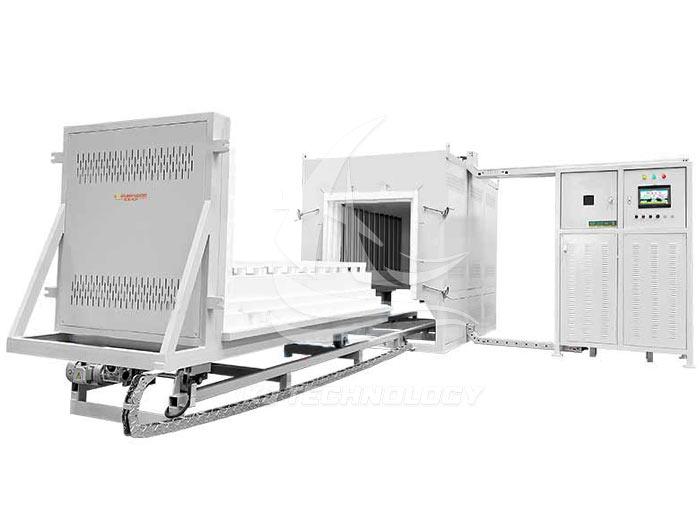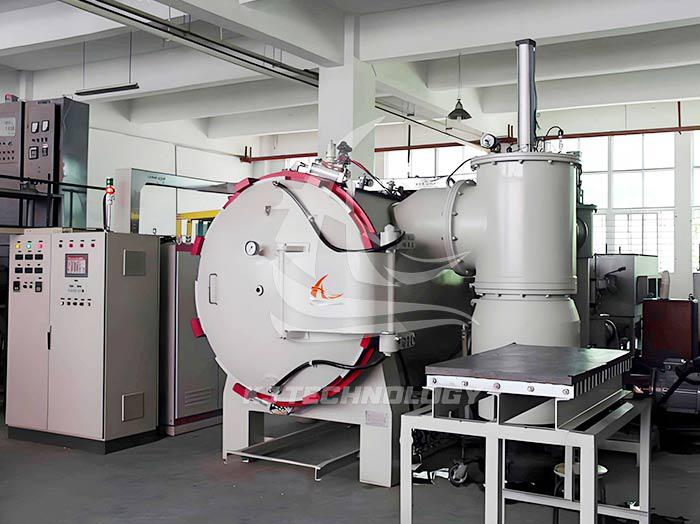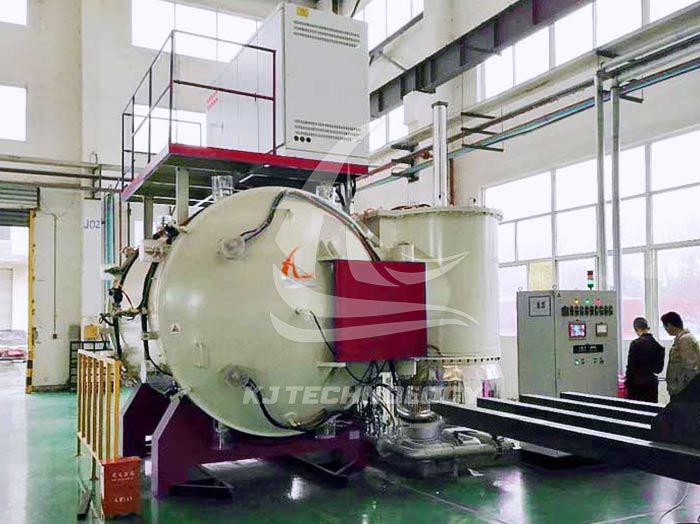High vacuum heat treatment brazing electric furnace
 10-15-2025 Author: KJ technology
10-15-2025 Author: KJ technology
High vacuum heat treatment brazing electric furnace (vacuum brazing furnace) is a device that achieves precision machining of materials in a vacuum environment. Its core functions include brazing, sintering, heat treatment and other processes, and it is widely used in aerospace, automotive manufacturing, electronic equipment and other fields that require high welding quality. The following analysis is conducted from five dimensions: working principle, technical characteristics, application fields, equipment structure, and operational precautions:
1. Working principle
Vacuum brazing furnace achieves brazing through the collaborative work of vacuum system and heating system:
Vacuum system:
By relying on the coordination of pump groups (mechanical pumps, maintenance pumps, Roots pumps, diffusion pumps, etc.) and control valves (front-end valves, bypass valves, maintenance pump valves, high valves, etc.), the furnace can be evacuated to the required vacuum level (the cold state ultimate vacuum level can reach 5.0 × 10 ⁻⁴ Pa or above).
Typical vacuum pumping process: Start the mechanical pump and maintenance pump, open the front-end valve and maintenance pump valve, and evacuate the diffusion pump; When the vacuum degree reaches the set value, the Roots pump starts, the bypass valve opens, the front valve closes, and the vacuum chamber is evacuated; After the diffusion pump is heated to the specified temperature and the vacuum degree meets the standard, the high valve is opened, the bypass valve is closed, and the front valve is opened to draw high vacuum into the vacuum chamber.
Heating system:
Using high-precision temperature control instruments (such as programmable PID controllers) and partitioned heaters (resistance wires or electromagnetic induction) to achieve precise temperature control inside the furnace (temperature control accuracy ± 1 ℃, temperature uniformity within ± 5 ℃).
By measuring and controlling the current or voltage of the heating element, as well as monitoring the temperature inside the furnace, the stability of the brazing process is ensured.
2. Technical features
Anaerobic and pollution-free environment:
Under vacuum conditions, eliminate air to avoid oxidation, decarburization, and discoloration of the workpiece, maintain a clean and bright surface, and do not require complex post weld treatment.
Especially suitable for products with high appearance quality requirements such as stainless steel products and automotive parts.
High temperature precise temperature control:
Wide temperature range control (working temperature covering 100 ℃ to 2300 ℃) to meet the brazing process requirements of different materials.
30 segment programmable "time temperature" curve control, achieving precise setting and maintenance of process parameters.
Wide material adaptability:
It can brazed various metal materials such as aluminum, aluminum alloy, copper, copper alloy, stainless steel, alloy steel, low carbon steel, titanium, nickel, and Inconel, especially suitable for difficult to brazed materials such as aluminum alloy, titanium alloy, high-temperature alloy, refractory alloy, and ceramics.
Excellent joint quality:
The brazed joint is bright and dense, with good mechanical properties and corrosion resistance, meeting the needs of industries such as aerospace, electronics, and medical.
Production efficiency and cost optimization:
High degree of automation reduces operational labor intensity and improves productivity.
Save the cost of metal flux, eliminate the flux cleaning process, and reduce production costs.
3. Application Fields
Aerospace:
Manufacturing high-temperature structural ceramics and electronic ceramic components, such as engine hot end components, sensor housings, etc.
Automobile manufacturing:
Welding automotive components such as stainless steel heat exchangers, oil coolers, air conditioning system components, etc.
Electronic devices:
Precision annealing, microcrystallization treatment, such as integrated circuit packaging, optoelectronic device manufacturing, etc.
Other fields:
Vacuum sintering dewaxing of hard alloys, powder metallurgy, and metal injection molding materials; Mold processing and precision annealing of crystals; Preparation of ceramic glazes, etc.
4. Equipment structure
Vacuum system:
It consists of a vacuum chamber, pump system (mechanical pump, maintenance pump, Roots pump, diffusion pump), and control valves (front-end valve, bypass valve, maintenance pump valve, high valve), each of which is a pneumatic valve controlled by PLC.
Heating system:
Including stainless steel heating chamber shell, reflector screen, heater, ceramic insulation, water-cooled electrode, furnace bed, etc., to achieve uniform temperature distribution.
Cooling system:
Equipped with a heat exchanger, filled with high-purity nitrogen for forced cooling, shortening the process cycle.
Control system:
Adopting LCD touch screen operation, integrated PLC control system, supporting multi-stage program programming and automatic control.
5. Operation precautions
Safe operation:
Ensure airtight welding of the furnace body to reduce vacuum leakage; The water cooling system needs to be regularly inspected to prevent water leakage from causing explosions.
Before loading the workpiece, the surface oil stains need to be cleaned to prevent quenching oil vapor from entering the furnace and forming an explosive atmosphere.
Process control:
Strictly follow the recommended heating rate (such as ≤ 10 ℃/min) to avoid thermal stress damage to the workpiece.
After brazing is completed, perform forced cooling according to the program to ensure the performance of the joint.
Maintenance
Regularly check the oil level and quality of the vacuum pump, and replace aging seals.
Clean up the residue inside the furnace and keep the heating element and reflector clean.








